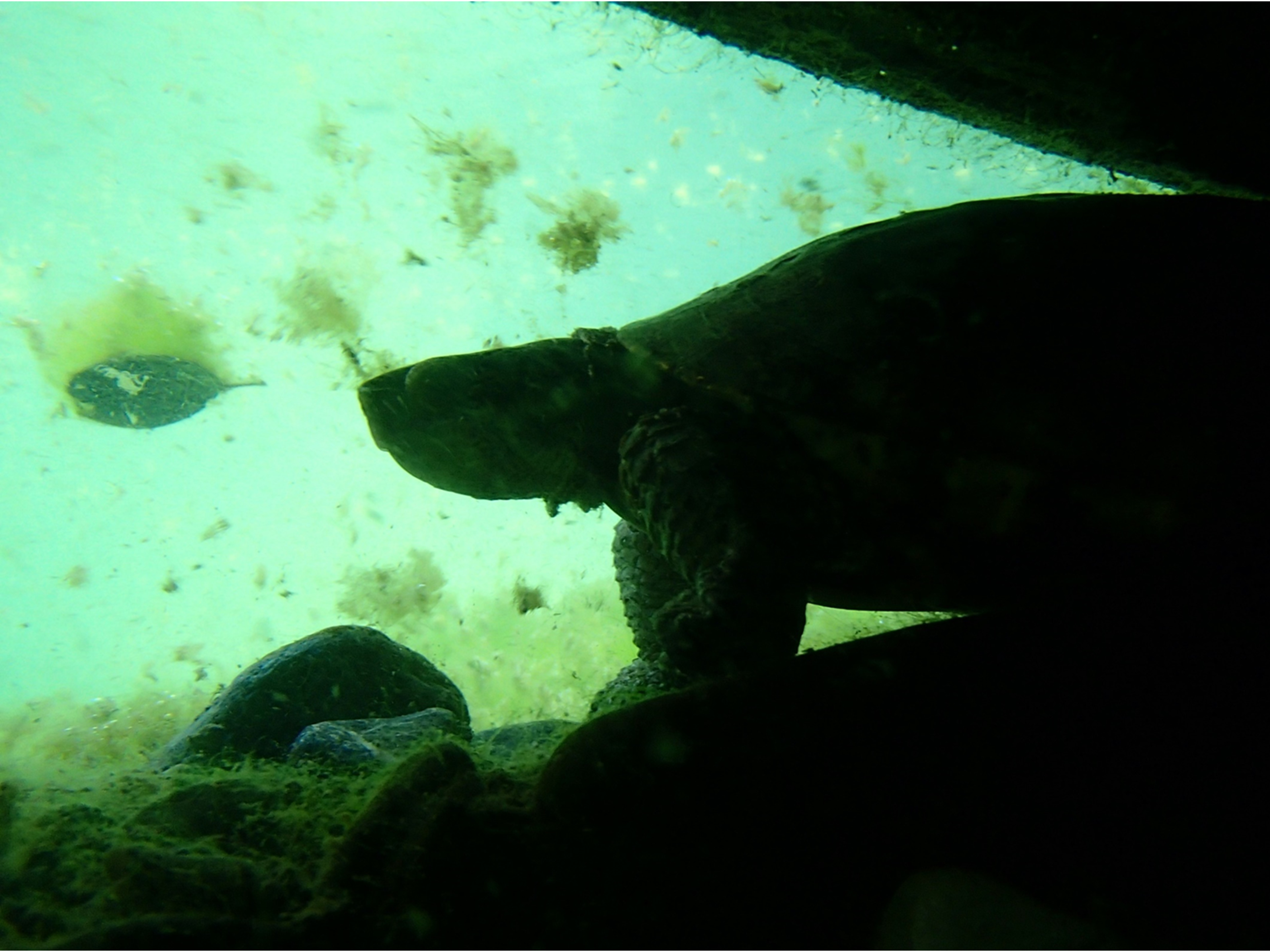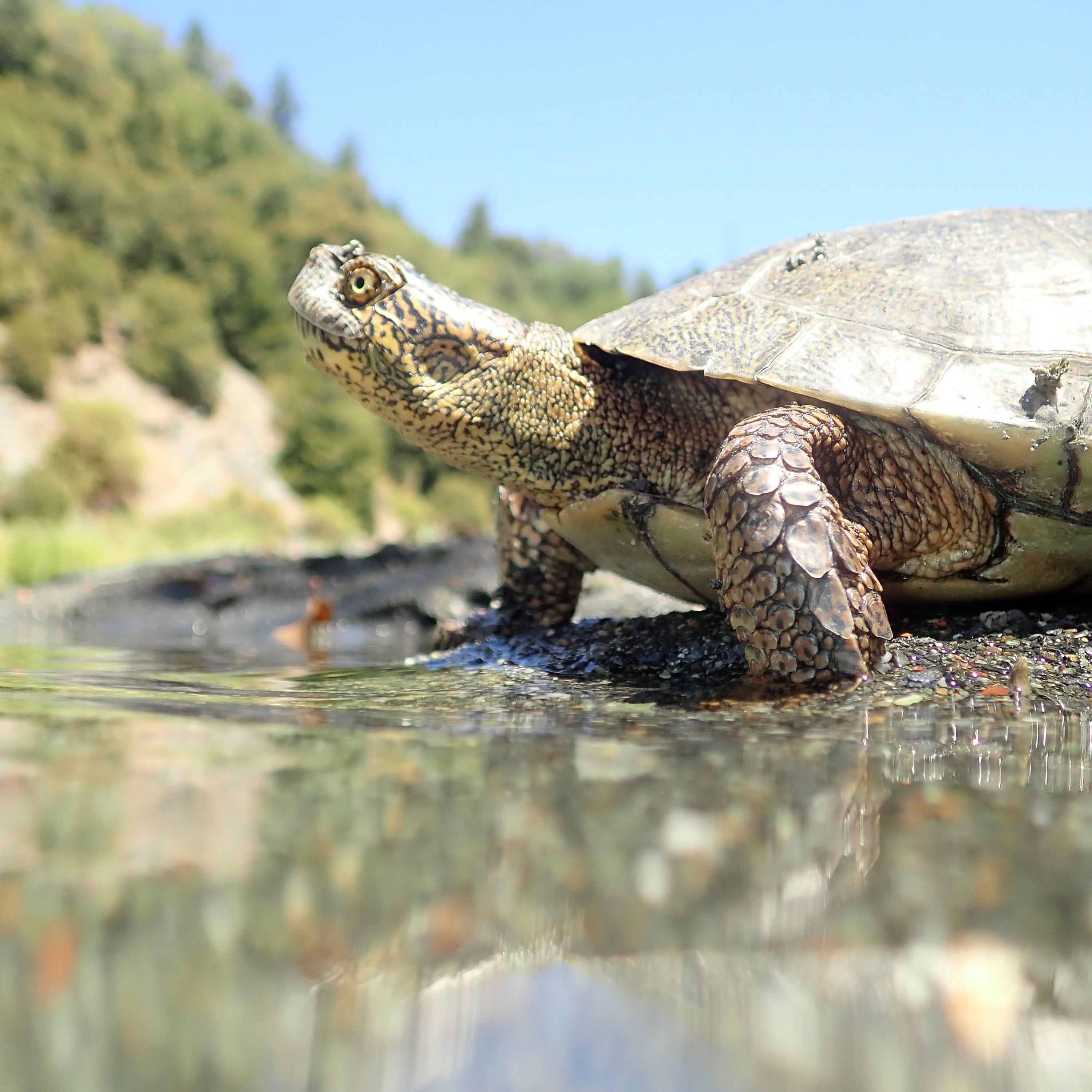
The northwestern pond turtle (Actinemys marmorata) has lived in the waters of the Trinity River for thousands of years. This species has undergone several taxonomic revisions since first being first described in 1841 (1, 2, 3). It was originally considered a single species with the southwestern pond turtle (Actinemys pallida) and called ‘Emys marmorata’. Then both species were renamed ‘Clemmys marmorata’. The northwestern and southwestern groups were more recently split into two species based on genetic and physical differences between them. So, you may read our local turtles described with different common and scientific names depending on when the document was published (3). But no matter when it was published, there is only one native freshwater turtle known to the Klamath Mountains and the current name is “northwestern pond turtle” (Actinemys marmorata).
Photo: A female northwestern pond turtle. [Don Ashton]
Actinemys marmorata
actin = ray or beam // emys = turtle // marmorata = marbled
As its common name suggests, the northwestern pond turtle is known to inhabit ponds and lakes, but within the Klamath Mountain ecosystem they are commonly associated with riverine habitats. Northwestern pond turtles are poikilothermic, meaning that they regulate their temperature by basking in the sun when they are cold, and seek cool water or shade when they are too warm. They distribute in sunny, slow water reaches with boulder lined pools that, importantly, have connectivity to broad floodplain habitat (5, p. 353).
The northwestern pond turtle has an acute sense of sight and low-frequency hearing, and while they are often seen basking in the sun above water, they will quickly retreat when they feel threatened (5). Reader, a river enthusiast we surmise, we are sure you’ve witnessed the sound of a plopping western pond turtle off a river log – but did you see them?
Male turtles are known to migrate from river to upland areas to overwinter in riparian shrubs or leaf litter. This trait is not ubiquitous among all turtles as some choose to stay close to their summer habitat by overwintering in banks near the river or pond. Local herpetologist Don Ashton of McBain Associates/Riverbend Sciences has spent decades studying turtles in the Trinity River and said, “Turtles are very smart animals, they tend to migrate close to the high water line (think 100 year floodplain) but over time we have found that in comparison with North Fork Trinity River populations, turtles on the mainstem are found more frequently hibernating and nesting in lower elevation areas, likely due to adaptation of minimized flooding by Trinity and Lewiston Dams.”
In addition to migration for hibernation and summering, female turtles migrate twice for nesting. When they are ready to lay their eggs, they fill their bladders and set off on a slow but steady journey to upland areas to dig their nests. Once in a satisfactory location, the female turtle wets the ground with her urine to help soften it for digging. Once her eggs are laid, she will journey back to her summer habitat.
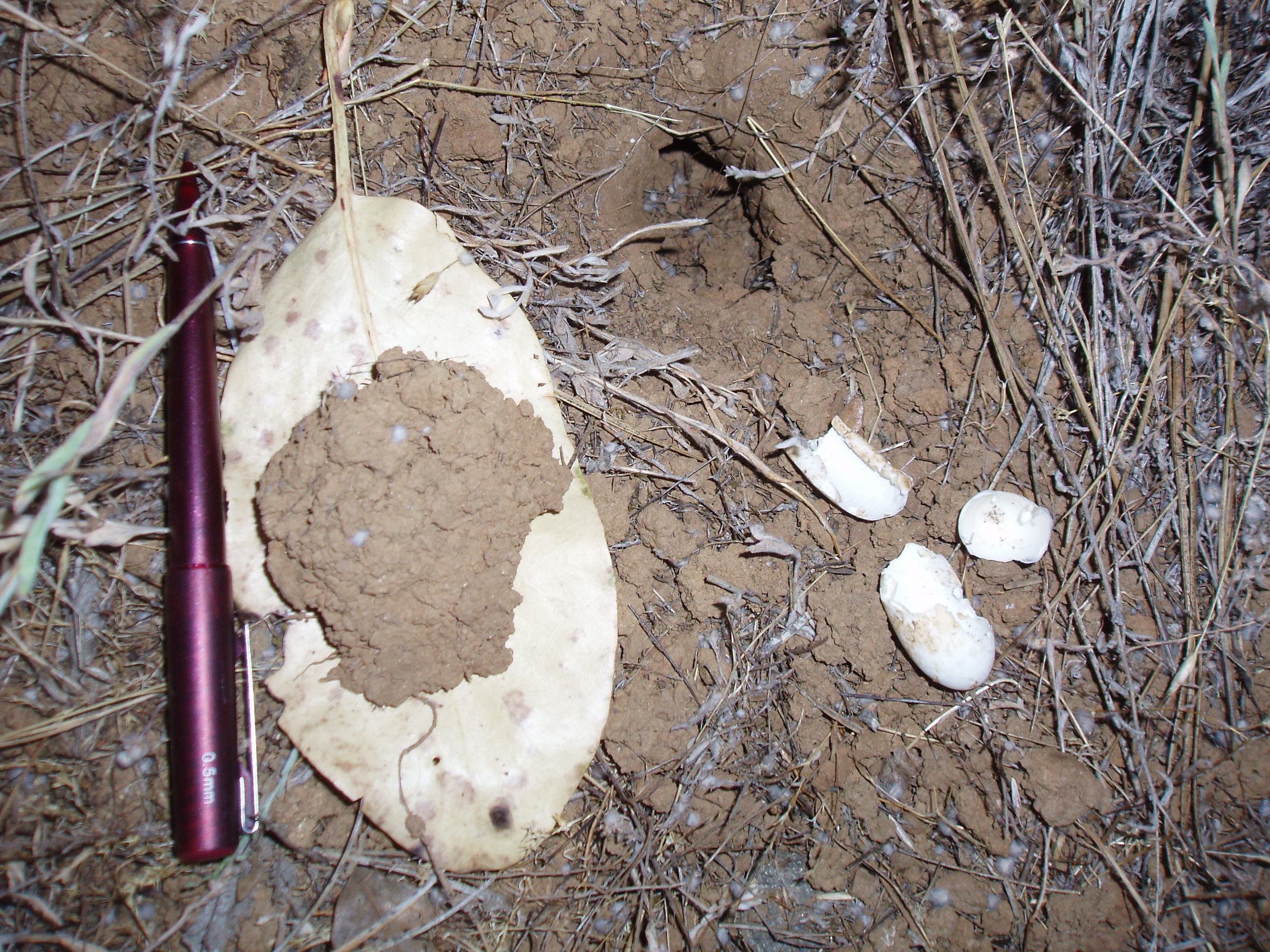
Migration to upland areas for nesting or hibernation can often lead to chance encounters with humans or their vehicles. If you happen to cross paths with a turtle, Ashton advises to leave them to their journey, “they are not lost” Ashton declares. However, if their location poses a risk of vehicular homicide, and you feel compelled to move them, point them in the direction of their path. That is unless the turtle happens to urinate while being handled, then, Ashton suggests, they should be pointed back toward a water source.
These ancient creatures are small to medium in size, growing up to 8 inches long. Interestingly, Trinity River turtles have been documented as even smaller than their regional counterparts. Some herpetologists surmise this could be due to temperature suppression caused by elevated dam releases causing cold water releases in the latter spring and summer months (6). Watch Don Ashton’s 2024 Trinity River Restoration Program Science Symposium presentation on the subject below.
Their dark brown or olive-colored shells often feature fine, lighter markings that give them a marbled look as reflected in their species name, marmorata. Their low profile and coloring help them blend in with riverbanks, keeping them safe from predators like raccoons, skunks, and birds of prey. The male northwestern pond turtle can be identified with a pointier snout and lighter pale cream coloring under its neck. If you encounter a turtle with hints of red near the ear it is likely a non-invasive red-eared slider, make note of where you are and if possible, provide photo documentation to the Trinity River Restoration Program or the California Department of Fish and Wildlife. Documentation of these instances can help in protecting our native turtle populations.
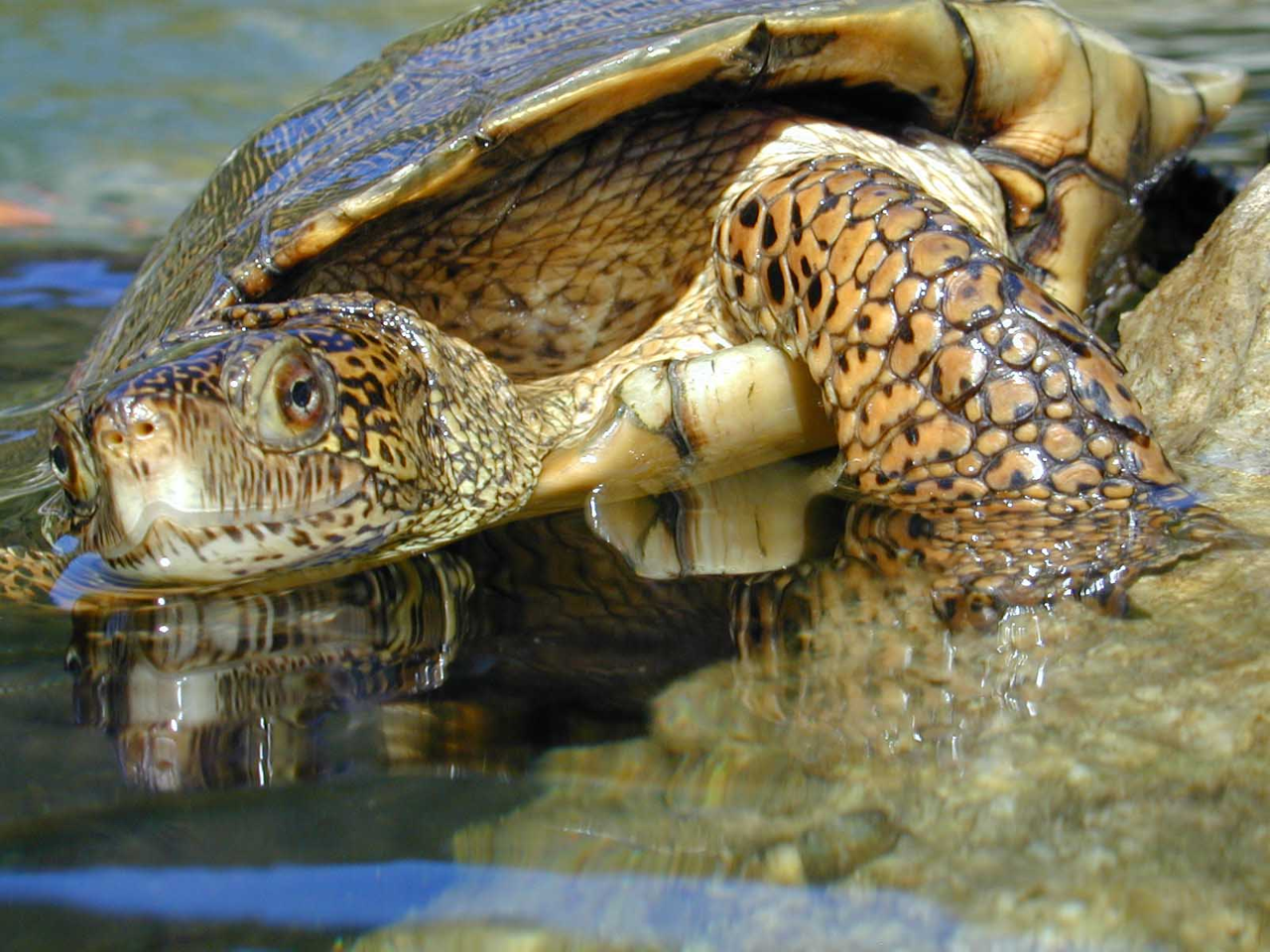
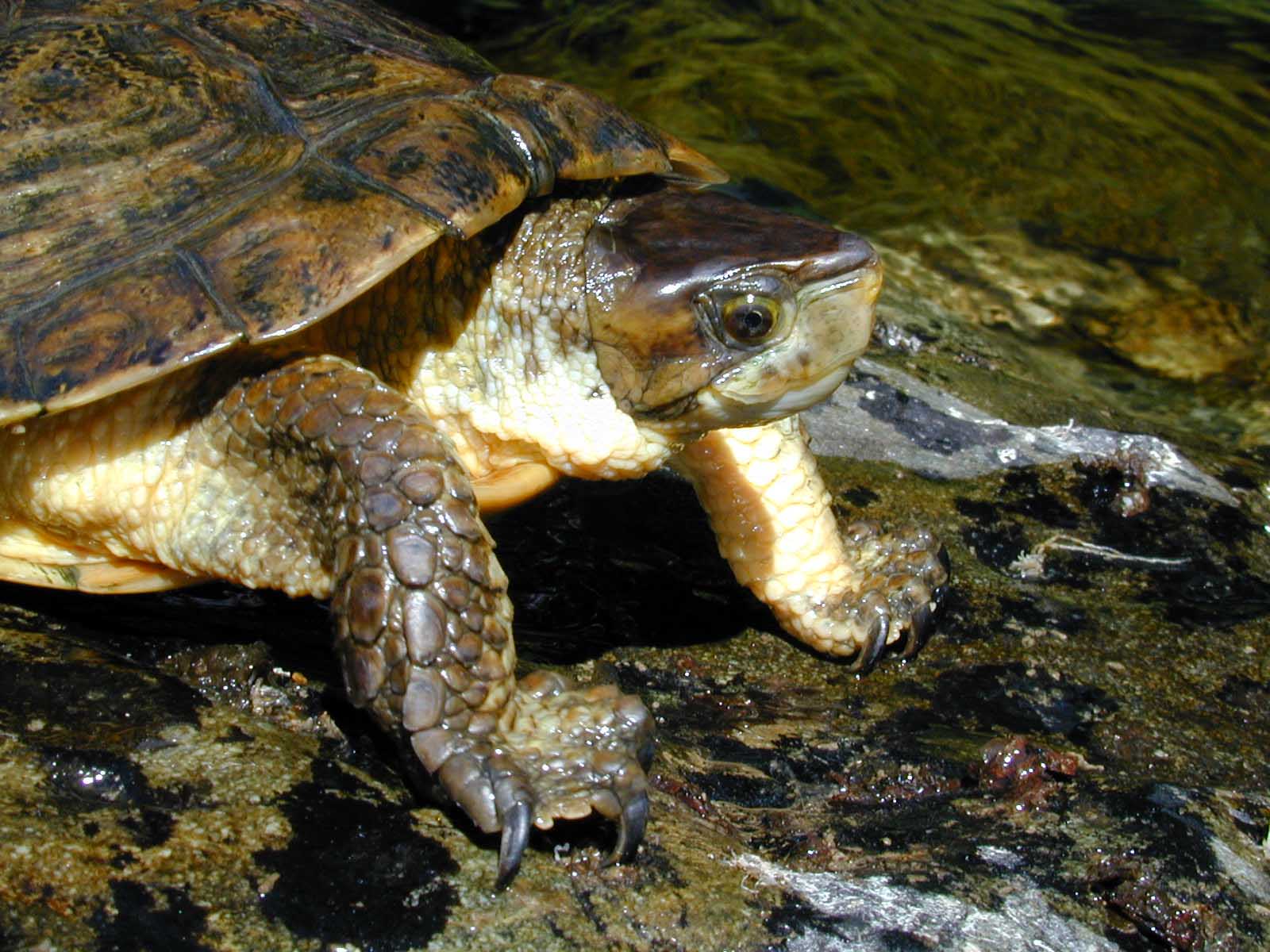
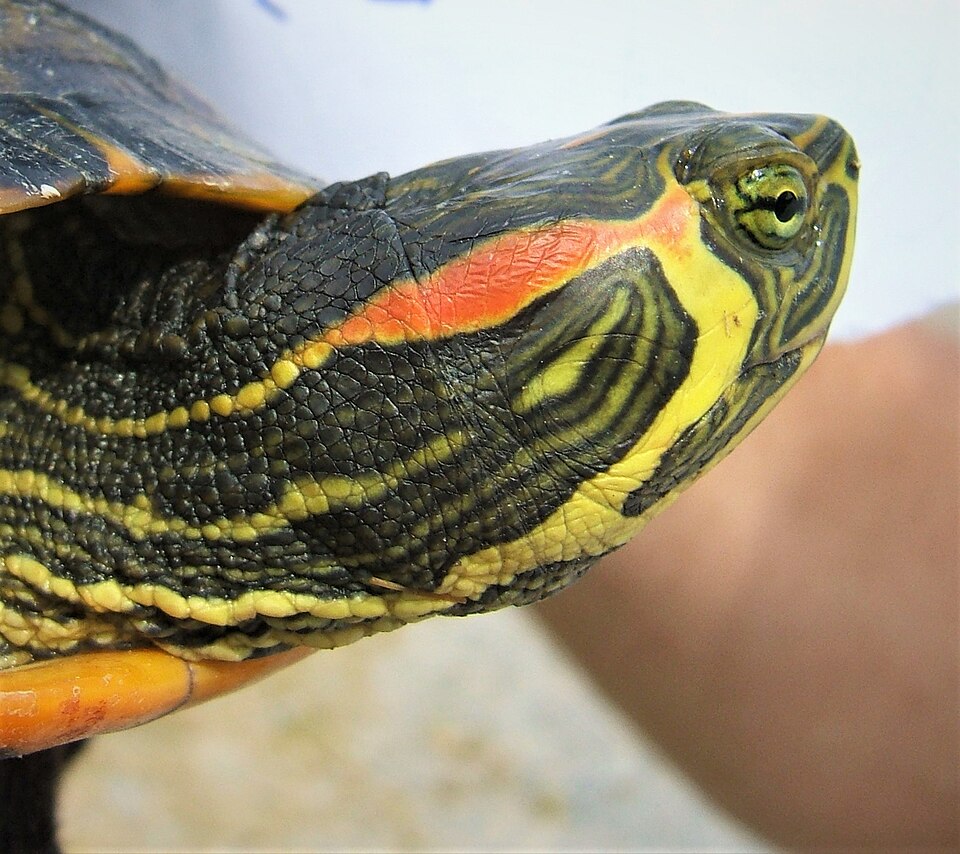
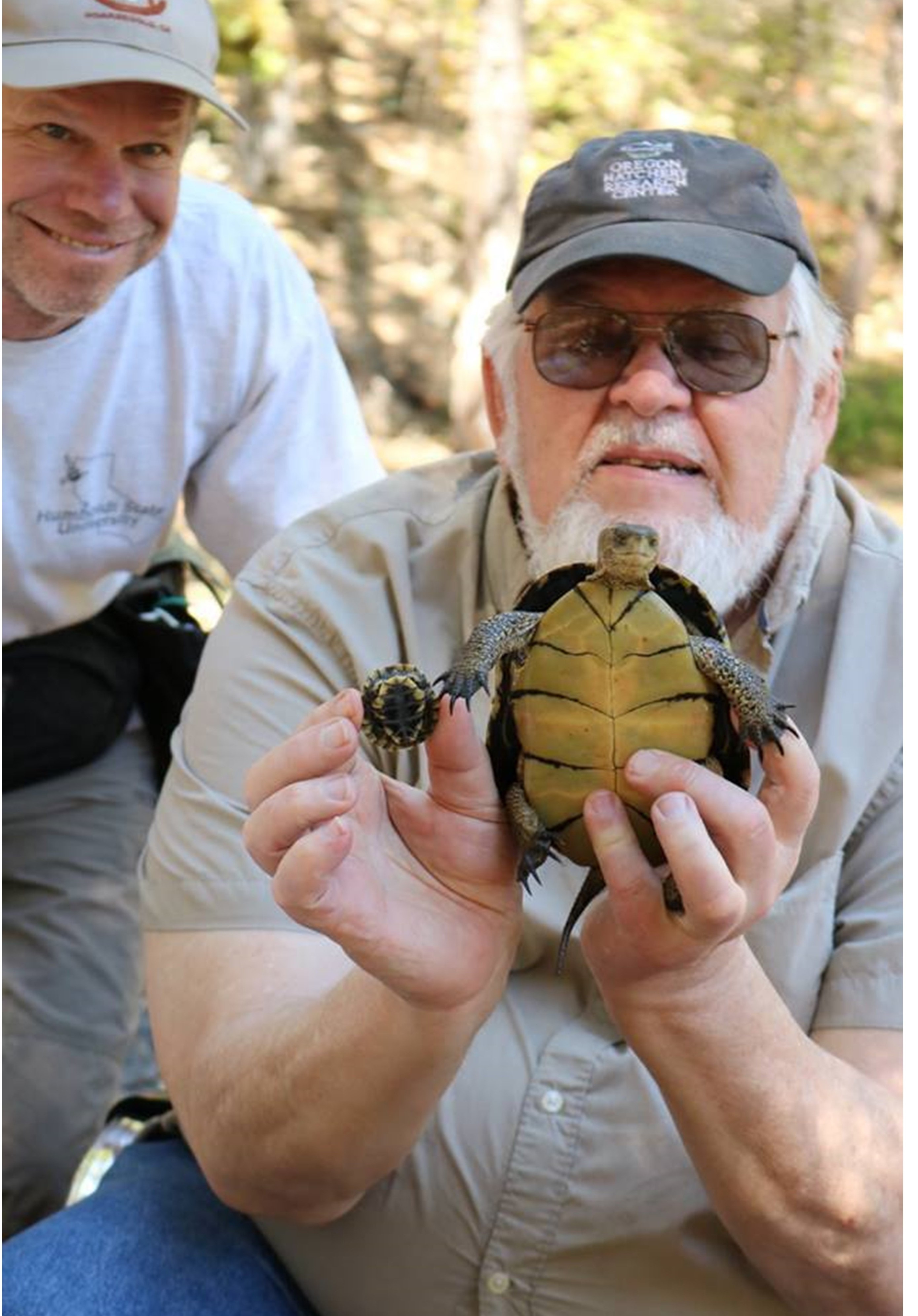
Unlike many reptiles, northwestern pond turtles grow slowly. They start out about the size of a quarter. Females don’t start laying eggs until they’re between 8-10 years old (3, 7, 8). They lay between 3 and 13 eggs, which incubate through the summer. In some parts of Northern California, hatchlings stay in the nest through winter, emerging the following spring. In the photo you can see a comparison of a female turtle at 55 years old with a newly hatched turtle. Ashton, in the background mentioned that the elder at age 55 was carrying 9 eggs at the time of that photo (2018) which suggests their lifespan may be quite long. Ashton mentioned, “it is certainly possible that there are turtles living in the mainstem that have lived there since before the dam was placed.”
Photo: A female, marked and recaptured and aged at 55 years old in comparison with a hatchling. Held by Bruce Bury and Don Ashton smiles from the back in 2018. [Jamie Bettaso]
The northwestern pond turtle has been studied locally for over 50 years due to the diligence of herpetologist Bruce Bury, now retired from USGS, who monitored northwestern pond turtles starting in 1968 while earning his Ph.D. at UC Berkeley. He marked turtles with an identifying notch in a tributary of the South Fork Trinity River, allowing for scientists to track longevity on the only native species known in the Klamath Range (5, p. 354). Although Bury has documented turtles over 50 years old, northwestern pond turtle longevity is still being studied today.
The northwestern pond turtle is commonly seen in the Trinity River, but its population has been declining throughout its west coast range. This decline is so severe that in 2023 the U.S. Fish and Wildlife Service proposed to list the northwestern pond turtle as a “Threatened” species (8, 11). Habitat loss, hydrologic alterations and invasive species are a few human caused threats to northwestern pond turtles. The state of California also recognizes the northwestern pond turtle as a species of “special concern”. As such, handling these turtles requires permitting and are considered illegal to keep as pets.
The Trinity River Restoration Program has been involved in research to identify and address some of these threats. A graduate student from Cal Poly Humboldt, Leah Sloan, determined that non-native bullfrogs (Lithobates catesbeianus) eat young northwestern pond turtle hatchlings to the detriment of their populations along the Trinity River (10). Bullfrogs prefer off-channel ponds, which are perfect areas for northwestern pond turtles to grow. Bullfrogs require perennial ponds to reproduce because their tadpoles take longer than one year to grow (and the mainstem Trinity River is too cold and swift to support bullfrogs year-round), so ponds that normally dry out won’t support bullfrogs permanently. Seasonal drying isn’t much of a concern to turtles because they can simply walk to the river when their home dries up. This is one recommendation for the Program to consider when rehabilitating a site.
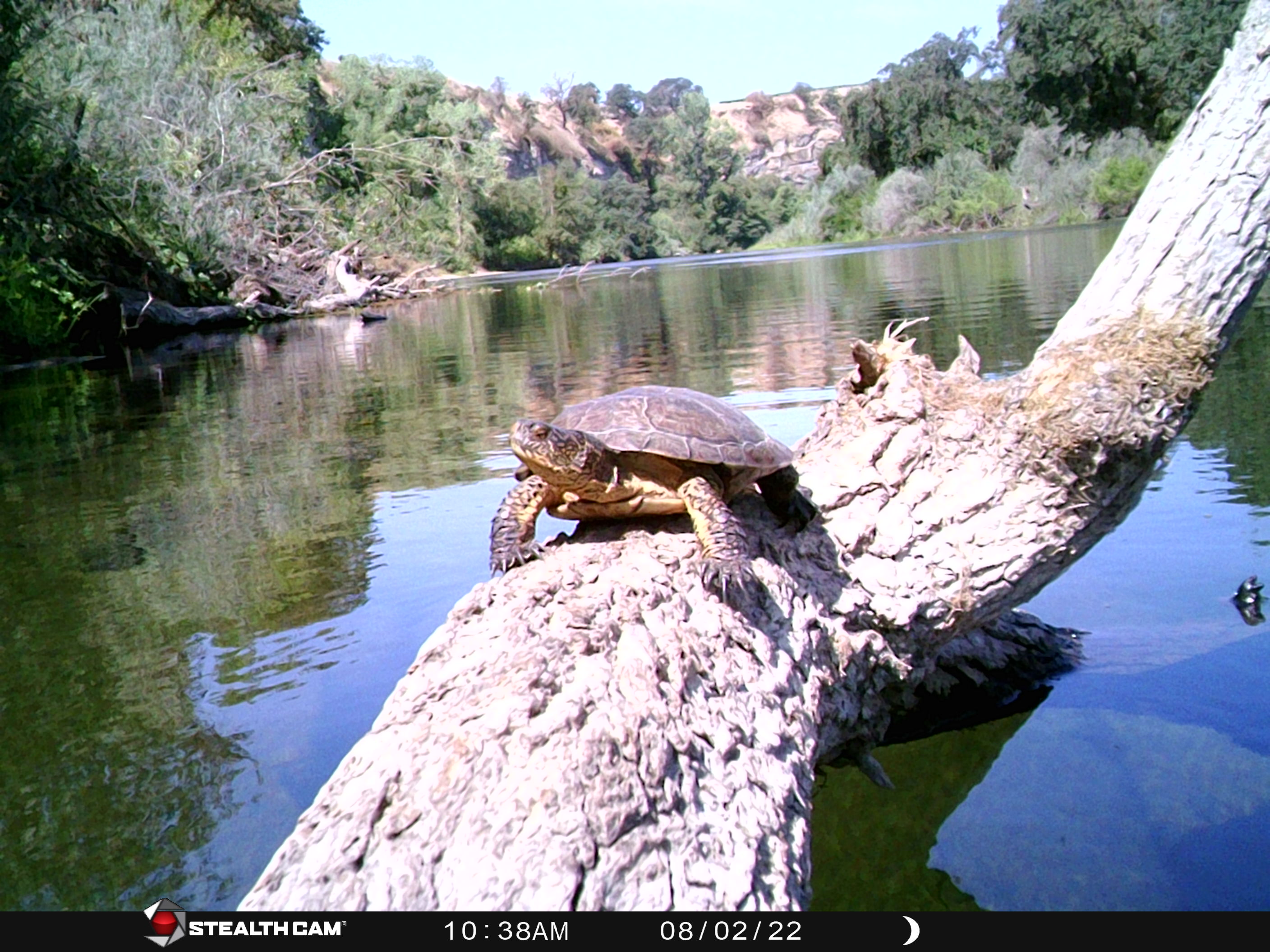
Today, turtle researchers and wildlife managers are still learning more about turtle behaviors and how to change management to better serve the northwestern pond turtle in the Trinity River region. From size and aging to nesting sites and travel patterns, each discovery helps build a clearer picture of what these turtles need to thrive.
References
- Scientific and Common Names of the Reptiles and Amphibians of North America – Explained © Ellin Beltz
- Holland DC. 1994. The Western Pond Turtle: Habitat and History.
- Bury, R.B., Welsh, H.H., Germano, D.J., and Ashton, D.T. (eds). 2012. Western Pond Turtle: Biology, Sampling Techniques, Inventory and Monitoring, Conservation, and Management. Society for Northwestern Vertebrate Biology, Northwest Fauna, Number 7. 128 pp.
- Shaffer H.B., Scott, P.A., 2019. Assessment for the Western Pond Turtle. Prepared for the US Fish and Wildlife Service by University of California, Los Angeles.
- Kauffmann, M. Garwood, J. The Klamath Mountains: a Natural History. 2022. p. 353-354.
- Ashton, Don & Bettaso, Jamie & Welsh, Hartwell. (2015). Changes across a Decade in Size, Growth, and Body Condition of Western Pond Turtle (Actinemys marmorata) Populations on Free-flowing and Regulated Forks of the Trinity River in Northwest California. Copeia. volume 103. 621-633. 10.1643/CP-15-253.
- California Herps – Northwestern Pond Turtle – Actinemys marmorata
- Wikipedia – Western Pond Turtle
- https://www.fws.gov/press-release/2023-09/us-fish-and-wildlife-service-proposes-federal-protections-both-species
- Sloan L, Marks S. 2012. Summary of Management Implications for the Project on Western Pond Turtles (Actinemys marmorata) in Lentic Habitats Along the Trinity River, California. Report to the U.S. Bureau of Reclamation, Trinity River Restoration Program, from Humboldt State University, Department of Biological Sciences, Arcata, CA. Available: https://www.trrp.net/library/document?id=1819.
- Endangered and Threatened Species: Status with Section 4(d) Rule for the Northwestern Pond Turtle and Southwestern Pond Turtle. Posted by the Fish and Wildlife Service. Apr 4, 2024.

